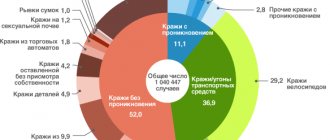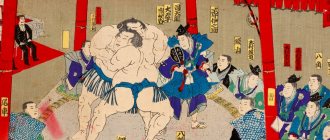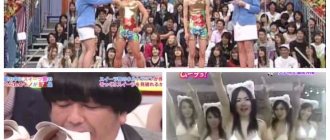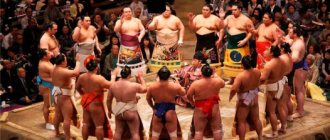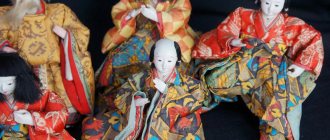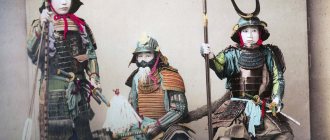Reasons [edit]
The sharp rise in rice prices caused extreme economic hardship, especially in rural areas where rice was a staple of life. [1] Farmers, who compared the low prices they received as a result of government regulation with high market prices, showed great hostility toward rice traders and government officials who allowed consumer prices to get out of control. Inflation entered an inflationary spiral at the beginning of the 20th century, which also affected most consumer goods and rents, and therefore city residents also had significant scope for grievances. Siberian Intervention The situation further escalated when the government bought up existing rice supplies to support troops overseas, causing rice prices to rise even further. Government intervention in economic affairs (low regulated rice prices) caused rural protests to spread to the cities.
Japan in 1918-1928
1. Exacerbation of internal contradictions after the 1st World War.
2. Liberal governments and the search for ways to modernize the country.
3. Japanese foreign policy in the 20s. XX century
During the years of World War I, Japan's economic position and its position in the Far Eastern region strengthened even more. Industrial production increased 5-fold during the war, Japan strengthened its influence in China, and in 1918 it took part in the intervention against Russia and established its control over Russian Primorye.
At the same time, internal contradictions caused by the peculiarities of Japan's modernization intensified in the country. In agriculture, large-scale landownership remained; peasants were forced to rent land for 50% of the harvest. This led to the plight of the peasants and the slow growth of agricultural production. Japan also lacked labor legislation, the exploitation of workers was greater than in the West, but there were severe penalties for participating in strikes, and the activities of trade unions were hampered in every possible way. The country had been a constitutional monarchy since 1889, but real power belonged to the military-bureaucratic elite headed by the emperor, and parliament had no influence on government policy. In Japan there was no universal suffrage; political freedoms existed only on paper.
In 1918 – 1923 There was a rise in the popular movement in Japan. In August 1918, “rice riots” broke out - spontaneous popular uprisings caused by a sharp rise in rice prices. They covered 2/3 of the country's territory, and 10 million people took part in them. These protests were brutally suppressed in September 1918. However, a new upsurge of popular protests soon began, caused by the economic crisis of 1920–1921. In 1920 - 1923 More than 2 thousand strikes took place, the number of trade unions quickly grew, putting forward not only economic, but also political demands. The number of peasant protests increased 8 times; the creation of peasant unions began in the villages, uniting in 1922 into a single organization. Small entrepreneurs and liberal intelligentsia put forward demands for universal suffrage and democratization of the country. Socialist groups appeared in the country, and the Communist Party was created in 1922.
A strong earthquake on September 1, 1923 helped the authorities bring down popular uprisings. The authorities used it to begin repressions against socialists and communists; in 1924, the Communist Party was even forced to dissolve itself. The state also allocated large funds for restoration work, which helped stabilize the situation. The earthquake united the nation, which also contributed to the decline in popular protests.
Nevertheless, the reasons that gave rise to internal contradictions remained. Crisis of 1920 – 1921 clearly showed that Japan had exhausted its development opportunities under the old system and needed further modernization.
Liberal politicians in Japan tried to solve the problem of continuing modernization in the 1920s. They advanced in the wake of the events of 1918, which showed that the use of force alone does not guarantee internal peace. In 1918 – 1932 Japanese governments formed liberal political parties.
In economics, liberals began to rationalize production. It was expressed in the technical renovation of industrial enterprises, in accelerating the development of new industries, and in expanding the range of products. In the social sphere, a law on social insurance was adopted in 1926, labor protection for women and adolescents was strengthened, and state pressure on trade unions was weakened. In the political sphere, the Liberals expanded the number of voters in 1919 and introduced universal male suffrage in 1925. They also allowed the activities of left-wing political parties, incl. the KPJ, which was restored in 1926. In foreign policy, liberals abandoned the aggressive course that had characterized Japan since the end of the 19th century.
In general, the liberals' policies were limited. One of the reasons was the opposition of conservative forces. Secret right-wing groups organized the murder of a number of prominent liberal politicians, incl. Prime Minister Hara in 1921. The upper house of parliament, appointed by the emperor, also became a tool of the conservatives. She introduced a number of restrictions into the law on universal suffrage, after which only 17% of men received this right. In 1926, the upper house failed the trade union law. The second reason for the Liberals' moderation was that the Liberal parties were closely associated with large companies, and many Liberal politicians used public office to enrich themselves. All this gave rise to political scandals, frequent changes of governments, and inconsistency in politics. This was especially evident in 1927–1929, when the government led by Tanaka was in power. It tightened domestic legislation and launched repressions against left-wing parties.
In addition to the unresolved internal problems, there was uncertainty in foreign policy. In the first post-war years, Japan strengthened its foreign policy position. At the Paris Peace Conference, she received Shandong and German possessions in Oceania. Participation in the intervention against Soviet Russia made it possible to establish control over Primorye and Northern Sakhalin. But already at the Washington Conference, Japan lost its acquired advantages: the Japanese-British alliance treaty terminated, Japan returned Shandong to China, agreed with the “open door” policy in China, and accepted obligations regarding the size of the fleet. In 1922, Japan had to withdraw troops from Primorye.
However, liberals in the 20s. in foreign policy they abandoned the reliance on force characteristic of the previous time and pursued a flexible course. In relations with Western countries, Japan focused on finding compromises, often at the cost of significant concessions. In 1925, the country established diplomatic relations with the USSR, withdrew troops from Northern Sakhalin, receiving in return a number of concessions on Soviet territory. In relation to China, the so-called “negative course” to maintain Japanese positions without the use of force. Japan supported the revolutionary government of the Kuomintang and made concessions on the return of concessions, issues of customs tariffs and extraterritoriality.
At the end of the 20s. Due to the lack of noticeable successes in Japan's foreign policy, a return to the forceful course was indicated. In 1927, the “Tanaka memorandum” appeared; in 1927-1928. Troops were sent to China twice to prevent the Kuomintang from establishing control over Manchuria. But in 1929, Japan withdrew its troops from China, fearing the intervention of Western powers. However, the country's political elite once again became increasingly convinced that the best way to ensure Japanese interests was an aggressive foreign policy.
Riots[edit]
The rice riots were unprecedented in Japanese modern history in scope, size, and violence. The initial protest occurred in the small fishing town of Uozu, Toyama Prefecture, on July 23, 1918. It began with peaceful petitions but quickly escalated into riots, strikes, looting, incendiary bombings of police stations and government offices, and armed clashes. In 1918 there were 417 separate disputes involving over 66,000 workers. [1] About 25,000 people were arrested, of whom 8,200 were convicted of various crimes, with penalties ranging from minor fines to death. [2]
Taking responsibility for the disruption to public order, Japanese Prime Minister Terauchi and his cabinet resigned on September 29, 1918.
Connections to Japanese imperialism are discussed. Scholars argue that to reduce the demand for rice, which at the time exceeded Japan's production capacity, colonial rice production was intensified in Taiwan and Korea. [3]
Japan in 1918-1939
Japanese domestic politics
Japan took part in the First World War on the side of the Entente and was among the winners. The Entente did not deprive Japan - it gave it a mandate for the islands in the Pacific Ocean (Marian, Caroline, Marshall), which previously belonged to Germany, as well as the Shandong Peninsula. These islands were of great strategic importance. They gave Japan access to the center of the Pacific Ocean, as well as proximity to the American naval base in the Hawaiian Islands. At the same time, Japan strengthened its position in China. It began to intensively capture the markets of countries located in the Far East and the Pacific Ocean. This, in turn, led to an increase in the income of Japanese monopolies (Mitsui, Mitsubishi, Yasuda, Sumitomo, etc.). The war years were a “golden period” for Japanese magnates. Textile production increased 4.5 times, metallurgy - 6 times, mechanical engineering - 5.5 times. However, the standard of living of the country's workers has fallen. This was confirmed in the “rice riot” that occurred on August 3, 1918 in Toyama Prefecture.
"Rice Riot"
The riot occurred as a result of price increases by speculators for brown rice. On August 10, the riot spread to Kyoto. Hungry rioters began to destroy stores. In a short time, the riot covered 2/3 of Japan. However, the government brutally suppressed the rebellion: thousands of people were imprisoned, many were sent to hard labor, and most were sentenced to life imprisonment. This rebellion, which blew up the foundations of the Japanese colonial empire, had a great influence on the rise of a new wave of national liberation movement in its colonies. In Japan itself, anti-war sentiment increased. In addition, in the Far East, the Red Army crushed the Japanese invaders.
Economic crisis of 1920-1922 dealt a powerful blow to the Japanese economy, since the Japanese economy was dependent on foreign markets. The crisis has further exacerbated the conflict within the country between labor and capital.
Economic situation
By the end of 1923, the Japanese economy began to experience some recovery. The reason for this was restoration work after a powerful destructive earthquake in September. The government has taken all necessary measures to ensure that large entrepreneurs do not suffer losses. For example, the deadlines for all payments were extended, and the damage they suffered was compensated. Japanese monopolies, in order to maintain large profits, reduced the price of export goods. The country's pig iron production doubled, amounting to 1 million 100 thousand tons; steel - over 842 thousand tons and amounted to 1 million 720 thousand tons. A decision was made on universal voting rights. The number of voters increased from 3 million to 4.3 million.
World economic crisis 1929-1933. dealt an even more devastating blow to Japan's economy. The reasons were the following factors: the strong relationship between the markets of Japan and America; the backwardness of the Japanese economy compared to the economies of leading countries; deepening consequences of the earthquake. The crisis was hit hard by the agricultural sector. Silk exports to the United States fell by 30%, and the price fell accordingly. By 1931, industrial production decreased by 31%, exports decreased by 65%. imports - by 72%. During the crisis, the number of unemployed reached 3 million people. The crisis has complicated the internal political situation in the country. The Union of Young Soldiers and New Concerns was formed. They pursued the interests of small and medium-sized entrepreneurs. The crisis complicated their situation, and therefore the young soldiers could not remain indifferent to this, since they were representatives of those strata that suffered most from the crisis.
Secondly, international treaties that sharply limited the power of the Japanese navy caused great dissatisfaction among young soldiers. But the newly created union was not a union of democratically minded people. On the contrary, this union took the path of fascism in Japan. At the same time, the young soldiers were devoted to the emperor. They began to demand that the emperor limit the dominance of the old concerns and opposed parliament. Thus, Japan became a fascist country. Young soldiers began to propagate ideas of domination in Asia and throughout the world, supporting the desire for power of the owners of new concerns. The old concerns had more authority than the new ones, since they were richer. But there was one factor for which old and new concerns could unite - the desire to conquer the world.
On May 15, 1932, young soldiers rebelled. As a result, the country's Prime Minister Inukai was even killed. Although the uprising was suppressed, the authority of the military increased more than ever. It is not without reason that from this time until 1945, the military bureaucracy was entrusted with leading the government. Despite this, on February 26, 1936, a second fascist uprising was launched. Although the uprising was already suppressed on February 29, it greatly agitated the ruling circles; 17 participants in the uprising were killed. They decided to eliminate the deep political crisis existing in the country by starting military aggression.
Japanese foreign policy
After the end of the war, relations between the United States and Japan on the issue of the Pacific Basin deteriorated sharply. The reason was the desire of both countries to be leaders in this region. Even the decisions of the Washington Conference (November 1921) could not completely eliminate differences between the leading states. Japanese monopolies, wanting to maintain their income, reduced the price on export goods. At the same time, Japan sought to improve relations with the Soviet Union, as it looked at Russia as a large raw material base located in the east of the country. During 1918-1925. Japan was unable to obtain these sources of raw materials through military means; on the contrary, Japan's intervention failed. Now there was no other way but to develop profitable trade and economic relations with the Soviet Union.
Therefore, on January 20, 1925, the Soviet Union and Japan signed an agreement on “Main Directions of Mutual Cooperation.” In accordance with it, Japan withdrew its last military base from the territory of Soviet Russia. But this does not mean that the ruling circles of Japan have abandoned claims to territories located in the Soviet Far East. In 1927, a government was formed from supporters of an active aggressive foreign policy. The new government described its goals in a document called the Tanaka Memorandum.
The letter, sent to the Emperor on July 25, 1927, openly called for Japanese domination throughout the world. For example, the document said the following: “Before conquering China, we must conquer Manchuria and Mongolia. But. to conquer the world, we must first conquer China. If we conquer China, then the rest of the small countries of Asia, including India and those located on the southern coast of the sea, fearful of us, will surrender themselves. For the purposes of national development, our plans include saber fighting with Russia on the fields of Mongolia. We must defeat the United States." The ruling circles of Japan soon began to implement their plans. In September 1931, Japan attacked the northeastern part of China - Manchuria, and in early 1932 conquered it. In 1932, she carried out attacks on other parts of China. On the conquered territory, she created a state called Manchukuo. In the summer of 1932, the regions of Zhekhe and Hebey were conquered. The United States approved their actions and provided weapons worth $147 million. In order to avoid being seen by the world community, Japan withdrew from the League of Nations in March 1933. In 1934, it declared that it would dominate East Asia and also announced that it was withdrawing from the Washington Treaty, which limited its right to arms. Japan began to look for ways to get closer to Germany, since Germany had to conquer the west, and Japan - the east. In November 1936, a written “Anti-Comintern Agreement” was concluded between the two states.
Japan staged various provocations on the border with the Soviet Union. From July 29 to August 11, 1938, she attacked the territory of the Soviet Union. This event took place on Lake Khasan (Primorye). However, the Soviet Army managed to clear its territory of Japanese troops. The Munich Agreement concluded in September 1938 (known to you from the previous material) further increased the appetite of the ruling circles of Japan. On November 3 of the same year, Japan issued a declaration establishing a new order in East Asia.
On May 11, 1939, the Japanese army attacked the Mongolian People's Republic (MPR) along the coast of the Khalkhin Gol River. In accordance with the mutual agreement, the Soviet Union provided assistance to the MPR. The Japanese army was defeated in four months of war. Despite this, Japan still did not give up its plans (i.e. its dominance in East Asia). In the spring of 1939, the fascist states recognized the hegemony of Japan in establishing a new order in the vastness of Greater East Asia. But Japan's relations with countries with interests in Greater East Asia (USA, UK and France) have sharply deteriorated. Japan could begin military action against them. This factor is the defeat at Khalkhin Gol. as well as the Soviet-German Treaty (August 23, 1939) forced a change in Japan's relations with the Soviet Union.
Participation in the war
After the outbreak of hostilities in the west from September 4-13, 1939, the Japanese government issued a declaration in which it made it clear that it would not interfere with actions in the west. On August 1, 1940, Kanae Bosch took over as Prime Minister and began to continue the plan to “establish a new order” in East Asia.
On September 23, 1940, Japan entered the northern Indochina Peninsula. On September 27, the Tripartite Pact of the aggressors was formalized in Tokyo for a period of 10 years - Germany, Italy, Japan. This proved that in order to achieve its goals, it completely united with the fascist states. On April 13, 1941, it concluded a neutrality treaty with the Soviet Union, developed the Cantokien plan, and waited for an opportunity. The size of the army was increased to 700 thousand people. Relations with the United States have deteriorated sharply.
On December 7, 1941, Japan launched a surprise attack on the American military base at Pearl Harbor, causing great damage. She conquered the territories of Malaysia, Burma, Thailand, Indonesia and the Philippines.
Beginning in 1942, Anglo-American troops went on the offensive and defeated the Japanese army. On August 6–9, 1945, the United States dropped an atomic bomb on Japan. On August 9, the USSR went on the offensive. On September 2, Japan unconditionally surrendered. Japan as a whole lost more than 5 million people killed, wounded and missing. It lost 340 warships, 50 thousand aircraft and merchant ships with a displacement of 8.4 million tons. The damage amounted to 64.3 billion yen. For the period from 1937 to 1945. its military expenditures amounted to 270 billion yen.
- Hello Gentlemen! Please support the project! It takes money ($) and mountains of enthusiasm to maintain the site every month.
